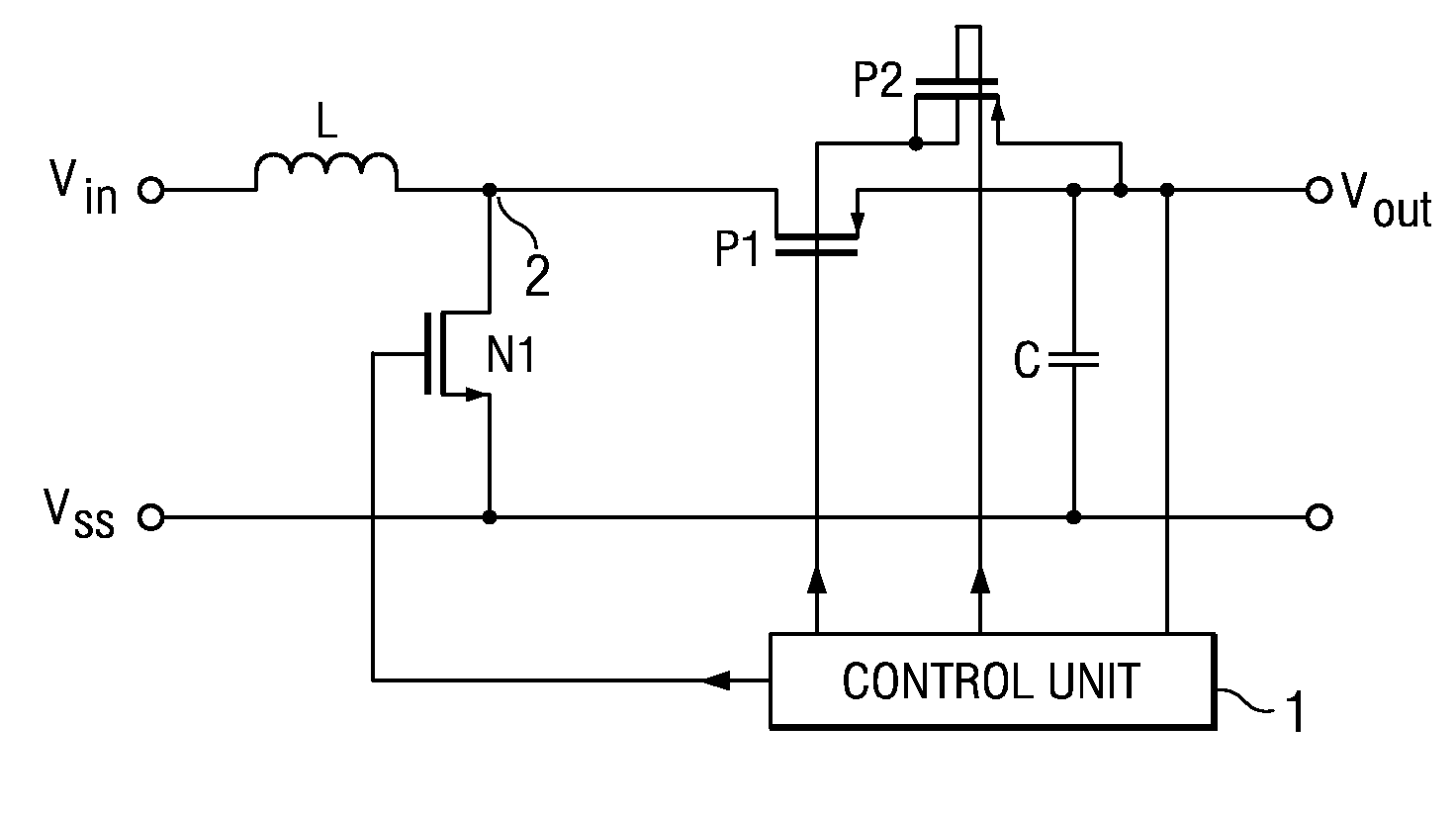DC/DC converter
a converter and dc technology, applied in the field of dc/dc converters, can solve the problems of inconvenient use, inability to use step-up voltage regulation, and difficulty in adjusting the voltage of the converter, and achieve the effect of simple method of dc voltage conversion
- Summary
- Abstract
- Description
- Claims
- Application Information
AI Technical Summary
Problems solved by technology
Method used
Image
Examples
Embodiment Construction
[0013]FIG. 1 illustrates a DC / DC converter circuit as described at the outset, serving to explain the gist of the invention.
[0014]FIG. 2 illustrates a preferred embodiment of a DC / DC converter in accordance with the invention in the form of its circuit diagram.
[0015]The circuit as shown in FIG. 2 has a similar configuration to that as shown in FIG. 1. The configuration of the circuit as shown in FIG. 2 will first be described.
[0016]Referring now to FIG. 2, there is illustrated how the circuit includes an inductance L also termed choke. Applied to the one terminal of the inductance is the input voltage Vin of the DC / DC converter which may be furnished e.g. by a battery. The other terminal of the inductance L is connected to the drain of a NMOS-FET N1 whose source is connected to the reference potential which in the present example includes the ground potential Vss. Instead of the first NMOSFET N1, some other controllable switch, e.g. a bipolar transistor may also be used.
[0017]The ot...
PUM
 Login to View More
Login to View More Abstract
Description
Claims
Application Information
 Login to View More
Login to View More - R&D
- Intellectual Property
- Life Sciences
- Materials
- Tech Scout
- Unparalleled Data Quality
- Higher Quality Content
- 60% Fewer Hallucinations
Browse by: Latest US Patents, China's latest patents, Technical Efficacy Thesaurus, Application Domain, Technology Topic, Popular Technical Reports.
© 2025 PatSnap. All rights reserved.Legal|Privacy policy|Modern Slavery Act Transparency Statement|Sitemap|About US| Contact US: help@patsnap.com


